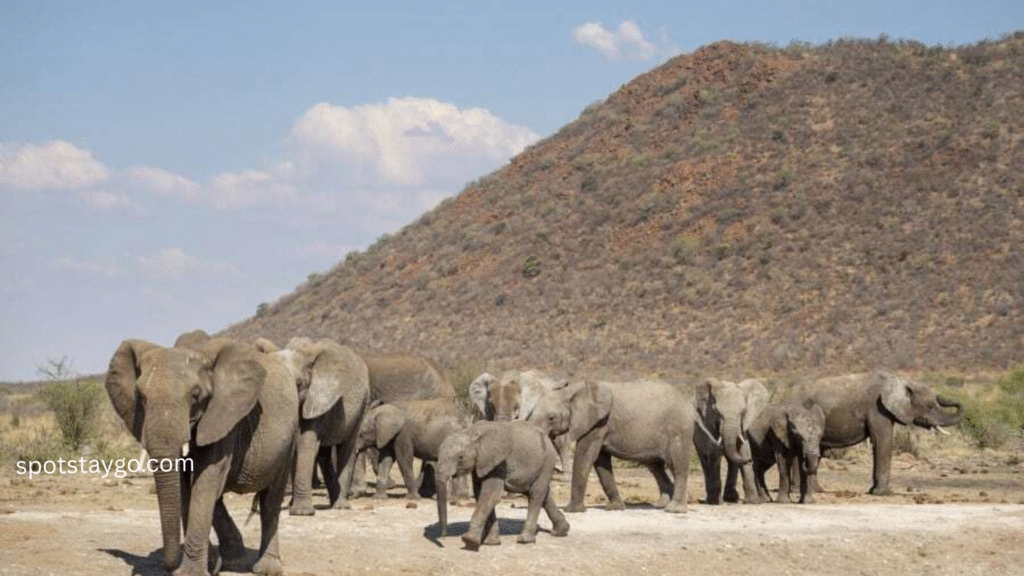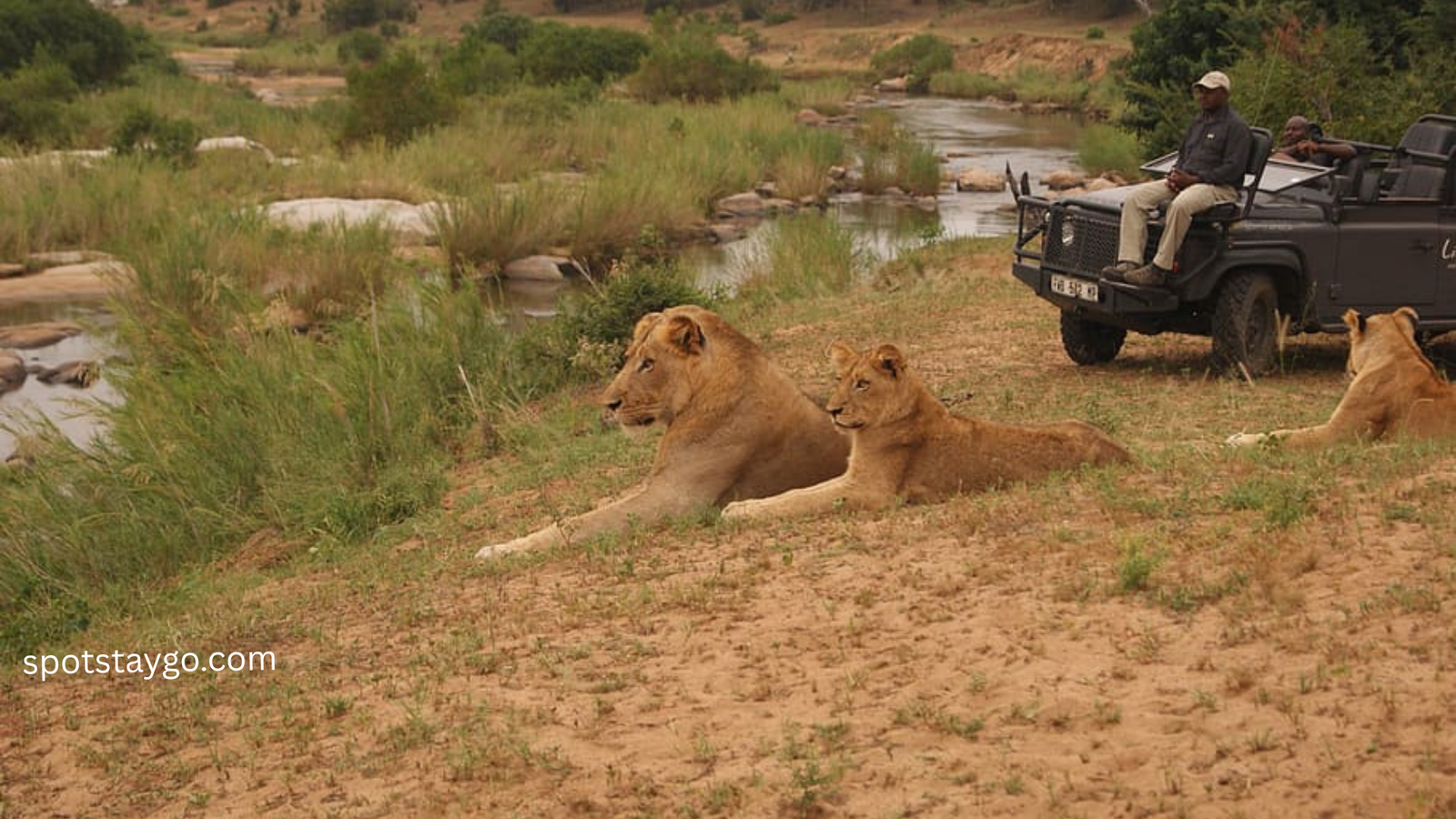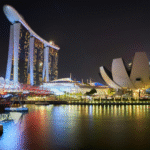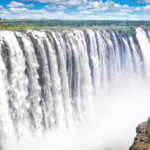South Africa Safari Supreme 2025- South Africa is a republic located at the southern tip of the African continent. It shares its northern borders with Namibia, Botswana, and Zimbabwe, and its northeastern borders with Mozambique and Eswatini. Lesotho is an independent country that is entirely surrounded by South Africa. An ideal 7-day South Africa itinerary can be focused on an exciting safari experience in Cape Town and Kruger National Park, or it can be based on exploring the scenic Garden Route. Now let’s talk about South Africa Safari Supreme 2025.
South Africa Safari Supreme 2025-
South Africa offers a variety of spectacular safari destinations, where nature and wildlife come together in an extraordinary way.
- Kruger National Park is the country’s most famous safari destination, known for its diverse wildlife and classic safari experience.
- Sabi Sands Game Reserve, adjacent to Kruger, is especially renowned for its exceptional leopard sightings.
- Madikwe Game Reserve is a malaria-free area, offering a safe safari experience with a rich variety of wildlife.
- Addo Elephant National Park is famous for its large and social herds of elephants, drawing in nature lovers from around the world.
- Phinda Private Game Reserve is another excellent option, where visitors can spot the Big Five among diverse landscapes and abundant wildlife.
These safari destinations in South Africa provide unforgettable experiences for every nature enthusiast and adventure seeker.
South Africa Safari Supreme 2025-
1. Kruger National Park-

Kruger National Park is a premier national park in South Africa, located in the northeastern part of the country within the provinces of Limpopo and Mpumalanga. The park spans an extensive area of 19,623 square kilometers. It stretches approximately 360 kilometers from north to south and about 65 kilometers from east to west. The administrative headquarters of the park is located in Skukuza.
The area was first declared protected by the government of the South African Republic in 1898, and in 1926, it was officially designated as South Africa’s first national park. Kruger National Park forms part of the Kruger to Canyons Biosphere, which is recognized as an official biosphere reserve.
2. Sabi Sands Game Reserve-

Sabi Sand Game Reserve is located in the Lowveld region of Mpumalanga Province, South Africa, and borders the western edge of Kruger National Park. This reserve is actually a collection of private game reserves. It is named after the Sabie River, which forms its southern boundary, and the Sand River, which flows through it. The total area of the reserve spans approximately 62,308 hectares (or 623.08 square kilometers).
The reserve comprises several prominent private game reserves and lodges, including:
- Buffelshoek, Djuma Game Reserve, Elephant Plains, Cheetah Plains
- Mala Mala Game Reserve, Chitwa Chitwa, Nkorho, Simbambili
- Arathusa, Londolozi Private Game Reserve, Umkumbe, Nottens
- Sabi Sabi, Lion Sands Reserve, Kirkman’s Camp, Singita
- Exeter Leadwood, Inyati Game Lodge, Idube, Dulini
- Leopard Hills, Savanna, and Ulusaba Private Game Reserve
This region is especially renowned for its exceptional leopard sightings, rich biodiversity, and luxury safari experiences.
3. Madikwe Game Reserve-

Madikwe Game Reserve is a protected wildlife area in South Africa, named after the Madikwe (or Marico) River, whose basin it lies within. The reserve is located north of the small town of Groot-Marico, extending all the way to the Botswana border, and spans an area of approximately 750 square kilometers (290 square miles). It was officially opened to the public in 1994.
The process of reintroducing wildlife to this region began in 1992 under a project known as “Operation Phoenix”. As part of this initiative, the reserve saw the relocation of:
- African bush elephants,
- African buffalo,
- Entire breeding herds of both south-central black rhinos and southern white rhinos,
- Along with various species of antelope.
Following the success of Operation Phoenix, predatory species such as lions, cheetahs, spotted hyenas, and African wild dogs were also successfully reintroduced to the reserve.
Today, Madikwe Game Reserve is home to more than 60 species of mammals, making it a remarkable example of biodiversity restoration and wildlife conservation in South Africa.
4. Addo Elephant National Park-

Addo Elephant National Park (AENP) is a rich and diverse wildlife conservation area located near Gqeberha (formerly known as Port Elizabeth) in South Africa. It is one of the country’s 20 national parks and is currently the third largest in size, after Kruger National Park and the Kgalagadi Transfrontier Park.
The park features a main rest camp that includes a swimming pool, a restaurant, a floodlit waterhole, and various accommodation options. In addition, there are four other rest camps and four privately-operated concession lodges within the park. Two looped tourist roads from the main entrance are tarred, while the remaining roads are gravel. A secondary access route is also available from the southern section of the park, connecting to the N2 highway near Colchester and linking with the existing tourist road network within the park.
5. Phinda Private Game Reserve-

Phinda Private Game Reserve, formerly known as Phinda Resource Reserve, is a private wildlife sanctuary located in the KwaZulu-Natal province of South Africa. It lies between Mkhuze Game Reserve and the iSimangaliso Wetland Park, covering an area of approximately 170 square kilometers (66 square miles). The reserve was officially established in 1990.
The name ‘Phinda’ is derived from the Zulu phrase “Phinda Izilwane,” which means “to return” or, more poetically, “the return of wildlife.”
Phinda is renowned for its seven distinct ecosystems, which include:
- Palm-dotted savanna plains
- Hilly thickets
- Rare sand forests
- And dense thornveld grasslands
In 1992, Phinda joined forces with two neighboring landowners to establish the Mun-ya-wana Game Reserve. Through land expansion projects, acquisitions, and partnerships with local communities, the conservation area has since grown to 286 square kilometers (110 square miles).
Today, Phinda stands as a remarkable example of wildlife conservation and sustainable eco-tourism in action.
6. Kabeljous Nature Reserve-

| Just northeast of the town lies the Kabeljous Nature Reserve, located along the Kabeljous River. This “walk-about” nature reserve is popular among anglers due to the variety of fish species found in the area. The Kabeljous estuary is considered one of the best-preserved estuaries in the Eastern Cape. The lagoon provides a habitat for waterfowl, herons, and a variety of waders. Nearby is the Seekoei River Nature Reserve, which stretches between Aston Bay and Paradise Beach. |
7. Big Five-

| Located in the northeastern region of South Africa, Kruger National Park is one of the largest wildlife reserves in Africa. It boasts an exceptionally high density of wildlife, including the famed ‘Big Five’ — lion, leopard, rhinoceros, elephant, and buffalo — all found here in significant numbers. In addition to these, the park is home to hundreds of other mammal species. Numerous bird species such as vultures, eagles, and storks also inhabit the area. This vast expanse encompasses a variety of natural landscapes, including mountains, bushveld, and tropical forests. |
8. Oudtshoorn–

Towns like Oudtshoorn and De Rust are located in the Klein Karoo region, nestled between the Swartberg and Outeniqua mountain ranges. Oudtshoorn is known as the “ostrich capital of the world,” as this giant bird has become a symbol of the area. With its unique contrasts and natural beauty, the region is a major attraction for tourists.
This area is also home to Africa’s largest show cave system — the magnificent Cango Caves. Ecologically, it is significant due to the convergence of three distinct vegetation biomes: the Succulent Karoo, Cape Thicket, and Fynbos. Additionally, the Swartberg mountain range is an important part of the Cape Floral World Heritage Site.
Places to visit in South Africa for couples in 2025


